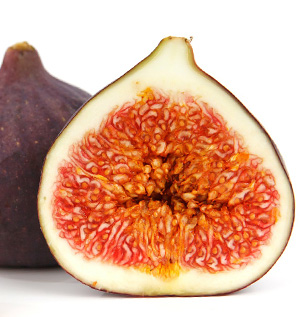Figs Without Wasps?

While wasp bodies may add some crunch to a tasty fig, you probably won’t find a wasp inside a fig you are about to eat, even if you look really hard.
Some types of fig that are grown for human consumption have figs that ripen without pollination. It is also possible to trick plants into ripening figs without wasps by spraying them with plant hormones.
Even when figs are grown the old-fashioned way, with wasps, the wasp is long gone by the time the fig crosses your lips. Figs produce a chemical called “ficin” that breaks down the wasp bodies. Ficin is so effective at breaking down, or digesting, animal proteins that natives of Central America eat fig sap to treat intestinal worm infections.

So, no, those fig-filled cookies you bought at the store are not full of dead wasps. But don’t despair. If you’re really interested in eating insects, Ask-A-Biologist has some great suggestions.
Read more about: Life and Death of a Fig Wasp
Bibliographic details:
- Article: Figs Without Wasps?
- Author(s): Dr. Biology
- Publisher: Arizona State University School of Life Sciences Ask A Biologist
- Site name: ASU - Ask A Biologist
- Date published:
- Date accessed:
- Link: https://askabiologist.asu.edu/figs-without-wasps
APA Style
Dr. Biology. (). Figs Without Wasps?. ASU - Ask A Biologist. Retrieved from https://askabiologist.asu.edu/figs-without-wasps
Chicago Manual of Style
Dr. Biology. "Figs Without Wasps?". ASU - Ask A Biologist. . https://askabiologist.asu.edu/figs-without-wasps
Dr. Biology. "Figs Without Wasps?". ASU - Ask A Biologist. . ASU - Ask A Biologist, Web. https://askabiologist.asu.edu/figs-without-wasps
MLA 2017 Style

Be Part of
Ask A Biologist
By volunteering, or simply sending us feedback on the site. Scientists, teachers, writers, illustrators, and translators are all important to the program. If you are interested in helping with the website we have a Volunteers page to get the process started.

